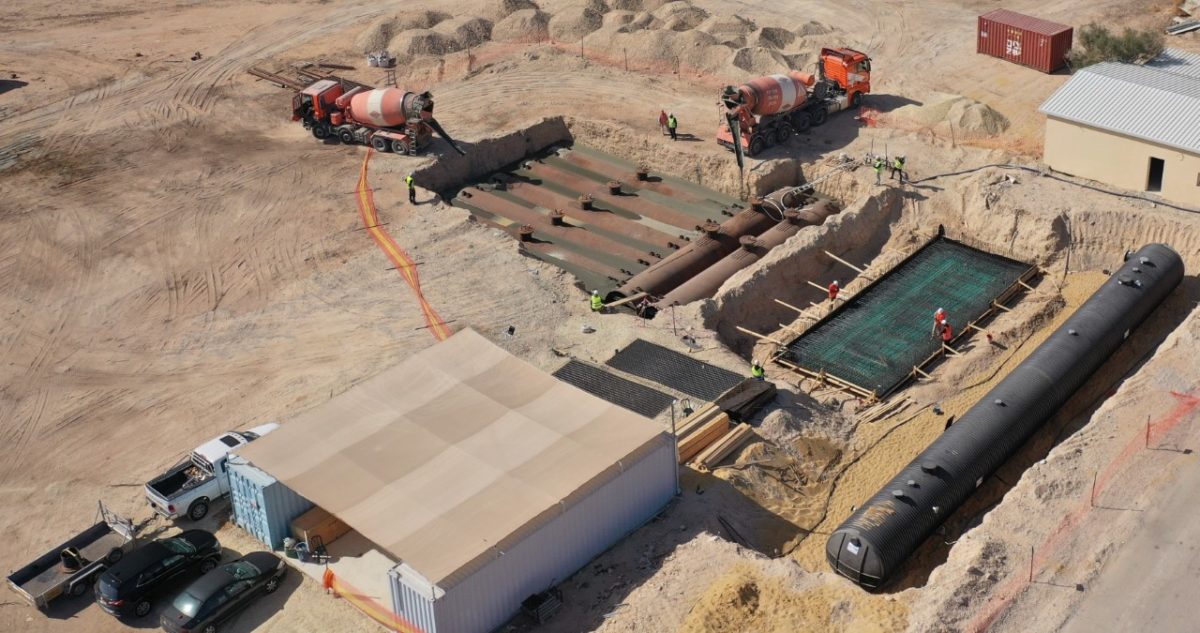Storing intermittently generated renewable energy with compressed air energy storage (CAES) seems to have become more than a feasible solution in recent months, as several large-scale projects have been announced in the United States, Israel and Canada.
According to Christian Breyer, professor of solar economy at the Lappeenranta University of Technology in Finland, the potential for this kind of storage technology is scattered all around the world, and ultimately dependent on underground geological conditions. “All major regions in the world have access to respective underground geological resources, but there are also vast regions without a suitable potential, at least according to our analysis,” he told pv magazine, referring to a study he conducted with fellow researcher Arman Aghahosseini.
Although cost reduction for this technology may be more limited than for other storage systems – as it is site-specific, like pumped hydro energy storage, which has, also, a rather limited cost reduction potential – CAES may become an interesting option for all those countries and regions that have a small interconnection with their neighbors. “The more nationally a highly renewable energy system is designed, the more relevant CAES becomes,” Breyer further explained. “We have regularly noticed in our results that strong cross-border grid integration reduces the need for CAES, and vice versa.”
He also specified that building, regularly, such plants around the world would create a specialized industry with experience aggregation which leads to optimized project planning, and also some economies of scale in engineering, permitting, site selection, and technical components. According to Breyer, although CAES may not be considered an optimal solution for daily storage or seasonal storage, it will be probably become a mainstream solution for all those markets where weekly storage is strongly needed.
“The main reasons for the slow progress of CAES, that have been discussed in the literature, are relatively low efficiency and high fuel consumption of the conventional CAES plants, as well as the need to identify suitable geographic features for the formation and locations,” Aghahosseini told pv magazine. “There have been some efforts to increase the efficiency of such storage and as a result, second generation of CAES has emerged. In addition, adiabatic CAES (A-CAES) can be operated without fossil fuels' requirement for the combustion process. This complements CO2-neutral generation of electricity from renewable energy, in particular solar PV and wind energy, when needed.”
In their paper, Breyer and Aghahosseini had assessed the CAES potential of 145 countries divided into nine major regions. Their analysis considered geological resource potential, including formations such as salt deposits, porous rock and hard rock. They found that North America and sub-Saharan Africa have the largest portion of suitable areas for this kind of storage technology. “This can be explained by the fact that North America has huge salt deposits and favorable geology for CAES,” the study notes. “Likewise, sub-Saharan Africa has large aquifer reservoirs and salt deposits which match with appropriate geological formations.” Western Canada was identified as the region with the largest potential in the world.
Northeast Asia, Southeast Asia and the South Asian Association for Regional Cooperation (SAARC) area, which includes Afghanistan, Bangladesh, Bhutan, India, the Maldives, Nepal, Pakistan and Sri Lanka, are pointed out as the regions with the least potential for CAES.
Crucial for the identification of an ideal location for large scale CAES projects, should be the proximity to renewable energy infrastructure and the electric grid. “Less than 5% of the global geological resource potential of about 6,574 TW of electricity storage, may be necessary in a 100% renewable energy scenario for the very unrealistic case that all electric storage would have to be provided by CAES,” the two researchers concluded.
*The article was updated on April 10 to add a statement from Arman Aghahosseini.
This content is protected by copyright and may not be reused. If you want to cooperate with us and would like to reuse some of our content, please contact: editors@pv-magazine.com.




From the map it looks like CAES could be viable in Texas, solving the problem of the grid not being connected to the US Western and Eastern grids.